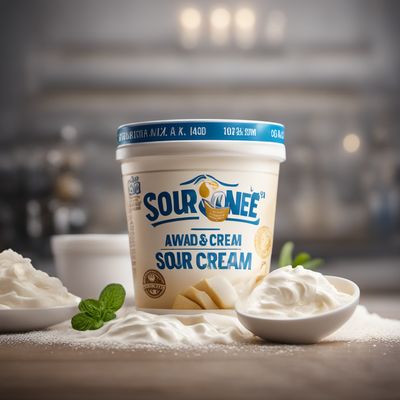
Ingredient
Flavoured milks
Delightful Fusion of Taste and Nutrition
Flavored milks are milk-based beverages that have been infused with various flavors, such as chocolate, strawberry, vanilla, or coffee. They have a creamy texture and a sweet taste that appeals to both children and adults. Flavored milks are often fortified with vitamins and minerals to enhance their nutritional value. They can be enjoyed chilled or used as an ingredient in desserts and smoothies.
Origins and history
The concept of flavored milks originated as a way to make milk more appealing to individuals who may not enjoy the taste of plain milk. The addition of flavors, such as chocolate or strawberry, helped increase milk consumption, particularly among children. Over time, flavored milks have evolved to include a wide range of flavors and have become a popular choice for individuals seeking a tasty and nutritious beverage option.
Nutritional information
Flavored milks are a good source of essential nutrients, including calcium, protein, and vitamins such as vitamin D and B12. However, it is important to note that some flavored milks may contain added sugars, so it is advisable to check the nutrition label and choose options with lower sugar content.
Allergens
Flavored milks may contain allergens such as milk and soy, depending on the specific flavor and brand. Individuals with lactose intolerance or soy allergies should opt for lactose-free or alternative milk options.
How to select
When selecting flavored milks, choose options that are made with real milk and contain minimal added sugars. Look for products that are fortified with essential nutrients, such as calcium and vitamin D. Consider personal preferences regarding flavor and sweetness levels, as different brands may offer varying intensities of flavor.
Storage recommendations
To maintain the freshness and quality of flavored milks, store them in the refrigerator at temperatures below 40°F (4°C). Ensure that the packaging is tightly sealed to prevent the absorption of odors from other foods. Consume flavored milks within the recommended expiration date for the best taste and quality.
How to produce
Producing flavored milks at home requires the ability to infuse milk with desired flavors. While it is possible to make simple flavored milks, such as chocolate milk, at home using cocoa powder or syrups, creating a wide range of flavors may require specialized equipment and ingredients. It is more convenient to purchase flavored milks from reputable brands or dairy producers.
Preparation tips
Flavored milks can be enjoyed as a refreshing beverage on their own, served chilled. They can also be used as a base for smoothies, milkshakes, or desserts, adding a burst of flavor. Experiment with different flavors to create unique combinations and enjoy the versatility of flavored milks in various recipes.
Culinary uses
Flavored milks are commonly used as a standalone beverage, particularly among children and individuals who prefer a sweeter taste. They are also used as an ingredient in various desserts, such as ice creams, puddings, and cakes, to enhance the flavor and creaminess. Additionally, flavored milks can be used as a substitute for regular milk in recipes to add a hint of flavor.
Availability
Flavored milks are widely available in grocery stores, supermarkets, and convenience stores worldwide. They are commonly produced by dairy companies and beverage manufacturers.
More ingredients from this category

Dairy snacks
Creamy Delights: Exploring the World of Dairy Snacks

Fermented milk products
The Tangy Transformation: Unveiling the World of Fermented Milk Delights

Whey
Protein Powerhouse

Milk and dairy powders and concentrates
The Creamy Essence of Culinary Excellence

Buttermilk
The Creamy Elixir

Milk
The Nourishing Elixir of Life

Baked milk and similar
The Creamy Delight: Baked Milk and Similar

Cheese
The Dairy Delight

Sour cream products
The Creamy Delight: Unveiling the Versatility of Sour Cream

Cream and cream products
The Creamy Delight: Unveiling the Versatility of Cream and Cream Products